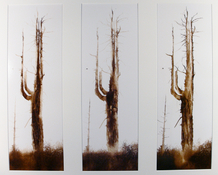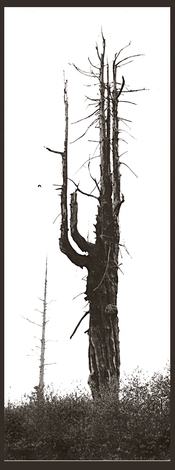You mean potassium ferricyanide. Potassium cyanide is still sometimes used for fixing wet plate/collodion photographs, but my personal view is that it has no place in a modern darkroom whatsoever. A slight misstep with that stuff is lethal.
Farmer's reducer is a mixture of potassium ferricyanide and fixer, i.e. sodium or ammonium thiosulfate. Potassium ferricyanide by itself is just the bleach. When working on prints (or indeed, negatives), I prefer to mix potassium ferricyanide with potassium bromide to make a bleach that turns the silver image back into silver bromide (i.e. it's a rehalogenating bleach - it turns the silver back into a silver halogen). This leaves the image in a white/yellowish state which is invisible on paper, but on film it's actually visible. More importantly, if you bleach too far, you can retrieve the image by simply re-developing it in any B&W developer. If the bleaching action is to your liking, you can then proceed to fix the paper/film to make the bleaching permanent; this will remove the bleached out silver bromide part of the image definitively. This approach gives you more control, since you can go back and correct mistakes.
Not necessarily, but bleaching has the benefit that you can do it after the print is done and you're still not happy with it. It also has the benefit that you can apply it in specific places with a brush, cotton pad etc. So overall it gives you more control.













